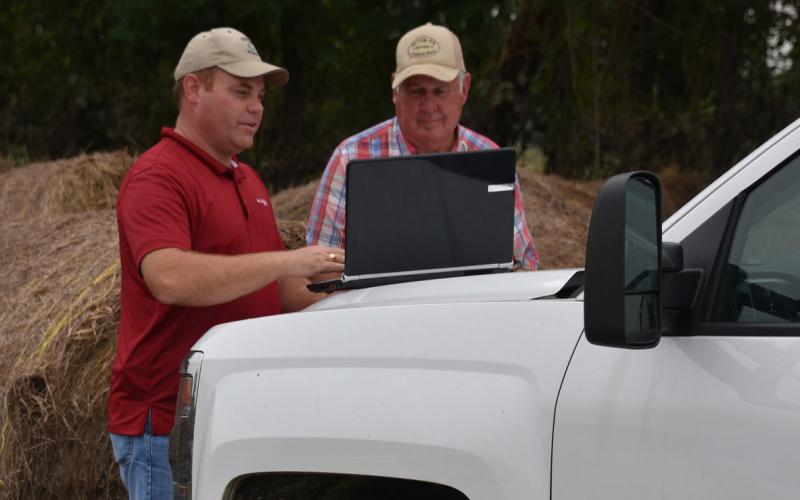Originally written by Tracey Erickson, former SDSU Extension Dairy Field Specialist.
We know that agriculture ranks as one of the most dangerous occupations causing an estimated 167 lost-work-time injuries on a daily basis, of which 5% result in permanent impairment, according to the National Institute for Occupational Safety and Health (NIOSH). In addition, approximately 20 farm workers per 100,000 die annually, with the leading cause of these deaths being tractor overturns (NIOSH, 2012).
Unfortunately, within agriculture we often become complacent in our daily safety habits and focus more on task accomplishment, instead of task accomplishment done safely. Fall brings one of the busiest times of the year in agriculture with activities such as harvest, manure application, silage chopping, residue baling and working of livestock/cattle as they are brought in from summer pastures.
Take time to train all employees on how to perform the task safely, assigned according to your established guidelines. Make sure to address incorrect performance immediately by showing and telling them how to perform a job correctly.
Farm Safety Tips
Below is a reminder of some of the basic farm safety tips as you go about accomplishing these tasks. This needs to be a habit performed on a daily basis, and not something we do occasionally.
Equipment Maintenance
- Follow operating, maintenance and safety instructions in your operator’s manual. Review them periodically.
- Stop the power before unclogging or fixing a power-driven machine.
- Turn off the engine before refueling. Do NOT smoke around hazardous chemicals.
- Keep all shielding in place and considering purchasing a roll-over protection system (ROPS) if the tractor is not already equipped with a ROPS or cab. Make certain hydraulic lines are properly connected and leak free.
- Make sure there is a working fire extinguisher and first aid kit on your operating equipment and that all employees know where they are and how to access or operate.
Equipment Operation
- Be personally fit and ready for a safe day at the wheel.
- Make sure all equipment operators are well trained and competent. Do NOT allow extra riders on equipment.
- Match ground speed to operating conditions. Watch where you are going. Avoid obstacles, ditches and steep slopes.
- When on the road, use your flashing lights. Make sure the slow-moving vehicle emblem is clean and visible. Obey all traffic rules. This includes NOT texting or using your personal smart phone for emailing or using apps, while driving equipment down roads.
- Watch for overhead power lines.
- Take the time to transport large equipment down public roads in an appropriate manner.
- When parking, set brakes, shift into “park” or “neutral”.
Facilities
- Make sure you have appropriate livestock handling facilities, which will be safe for both you and your livestock.
- Before emptying manure pits make sure it has been well ventilated and that you use a respirator to avoid exposure to toxic gases, wear a harness and have one person outside the pit who is able to summon help if necessary. Additional resources can be found on the Manure Pit Safety page by Penn State Extension.
- Follow safety guidelines for safe grain bin entry so that personnel entrapment in grain does not occur. Wear a safety harness at all times and work in pairs with one person staying outside the bin being able to summon help if needed. Additional resources can be found on the Hazards of Flowing Grain page by Penn State Extension.
Employees
- Dress appropriately for weather and working conditions, including personal protective gear such as a bump cap, gloves, safety shoes, ear plugs, respirators, and safety glasses.
- Take occasional breaks to reduce fatigue.
- Understand animal behavior and how an animal flight zone and balance point can be used to handle livestock in a safe and calm manner.
- Attend a livestock handling workshop as you and your employees improve your animal handling skill set.
- Lastly, and most importantly, watch out for the children on the farm yard. Make sure they understand NOT to play around equipment or facilities. In addition, we should also make an extra effort to know where they are at on the farm at ALL times.
I realize there are many more safety tips that we could have gone over. However, these tips can be applied to a large portion of the farm equipment and situations that will be occurring this fall and winter and hopefully, they will remind you to think “safety” and make it a habit!


